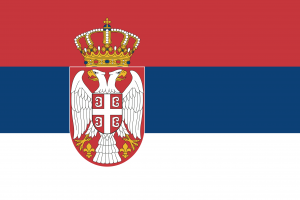Language/Serbian/Grammar/Verbs:-Reflexive-Verbs/az
 Հայերէն
Հայերէն Български език
Български език 官话
官话 官話
官話 Hrvatski jezik
Hrvatski jezik Český jazyk
Český jazyk Nederlands
Nederlands English
English Suomen kieli
Suomen kieli Français
Français Deutsch
Deutsch עברית
עברית हिन्दी
हिन्दी Magyar
Magyar Bahasa Indonesia
Bahasa Indonesia فارسی
فارسی Italiano
Italiano 日本語
日本語 Қазақ тілі
Қазақ тілі 한국어
한국어 Lietuvių kalba
Lietuvių kalba Νέα Ελληνικά
Νέα Ελληνικά Şimali Azərbaycanlılar
Şimali Azərbaycanlılar Język polski
Język polski Português
Português Limba Română
Limba Română Русский язык
Русский язык Español
Español العربية القياسية
العربية القياسية Svenska
Svenska Wikang Tagalog
Wikang Tagalog தமிழ்
தமிழ் ภาษาไทย
ภาษาไทย Türkçe
Türkçe Українська мова
Українська мова Urdu
Urdu Tiếng Việt
Tiếng ViệtReflexive Verbs in Serbian[redaktə | mənbəni redaktə et]
In Serbian, reflexive verbs are used to indicate that the subject of the sentence is also the object of the action. In other words, the subject is doing something to itself. Reflexive verbs are formed by adding the reflexive pronoun “sebe” after the verb.
Formation of Reflexive Verbs[redaktə | mənbəni redaktə et]
To form reflexive verbs in Serbian, you need to add the reflexive pronoun “sebe” after the verb. The reflexive pronoun must agree with the subject in gender and number.
For example:
| Serbian | Pronunciation | North Azerbaijani |
|---|---|---|
| On pravi krevet. | Oн прави кревет. | O otaqda yataq hazırlayır. (He makes the bed.) |
| On pravi krevet za sebe. | Oн прави кревет за себе. | O özü üçün yataq hazırlayır. (He makes the bed for himself.) |
As you can see in the example above, the verb “pravi” (to make) becomes reflexive when the pronoun “sebe” is added after the verb to indicate that the subject is making the bed for themselves.
Reflexive Pronouns[redaktə | mənbəni redaktə et]
Reflexive pronouns are used in Serbian to indicate that the subject is performing the action on itself. The reflexive pronoun “sebe” is used to indicate that the subject is performing the action on themselves. The reflexive pronoun must agree with the subject in gender and number.
Here are the reflexive pronouns in Serbian:
| Person | Pronoun |
|---|---|
| 1st singular | sebe |
| 2nd singular | sebe |
| 3rd singular (masculine) | sebe |
| 3rd singular (feminine) | sebe |
| 3rd singular (neuter) | sebe |
| 1st plural | sebe |
| 2nd plural | sebe |
| 3rd plural | sebe |
Examples of Reflexive Verbs[redaktə | mənbəni redaktə et]
Here are some examples of reflexive verbs in Serbian:
- Ja sebe perem. (I wash myself.)
- Ti sebe briješ. (You shave yourself.)
- On sebe oblači. (He dresses himself.)
- Ona sebe šminka. (She puts makeup on herself.)
- Mi sebe budimo. (We wake ourselves up.)
- Vi sebe tuširate. (You shower yourselves.)
- Oni sebe brišu. (They wipe themselves.)
Note that in all of these examples, the reflexive pronoun “sebe” is used to indicate that the subject is performing the action on themselves.
Conclusion[redaktə | mənbəni redaktə et]
In conclusion, reflexive verbs are an important part of Serbian grammar. They are used to indicate that the subject is performing the action on themselves. To form reflexive verbs, you need to add the reflexive pronoun “sebe” after the verb. The reflexive pronoun must agree with the subject in gender and number. By mastering reflexive verbs, you will be able to express yourself more clearly in Serbian.
Other lessons[redaktə | mənbəni redaktə et]
- Verbs: Present Tense
- Complete 0 to A1 Course → Grammar → Pronouns: Personal Pronouns
- Cases: Nominative and Accusative
- 0'dan A1 Seviyesine Kadar Tamamlayıcı Kurs → Dilbilgisi → Farklı Türlerde Fiiller: Tamamlanmış ve Tamamlanmamış
- 0 to A1 Course → Grammar → Verbs: Imperative
- 0 to A1 Course → Grammar → Verbs: Future Tense
- 0 to A1 Course
- 0 to A1 Course → Grammar → Verbs: Past Tense
- 0 to A1 Course → Grammar → Nouns: Gender and Number
- 0 to A1 Kursu → Qrammatika → Sifetler: Muqayisəli və Ən yüksək

